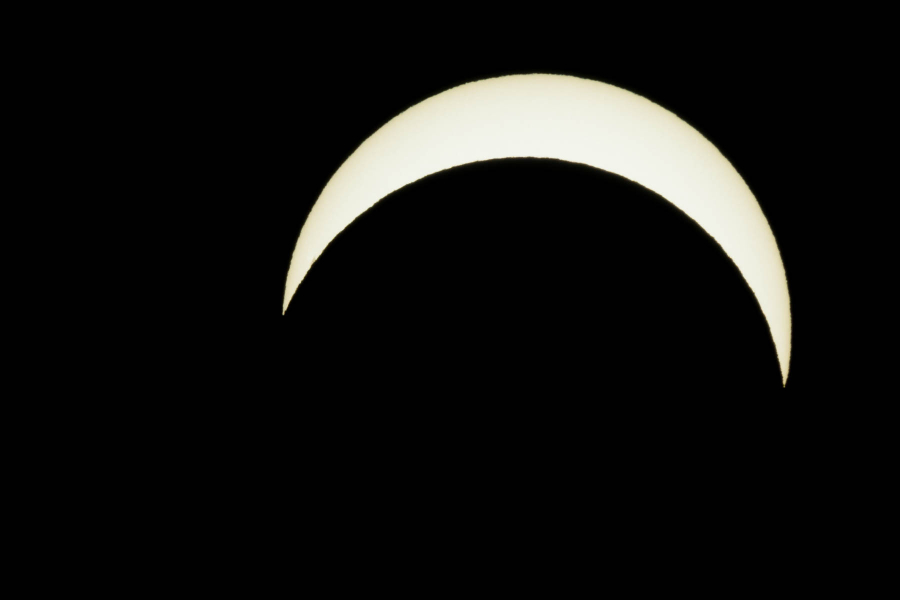Eclipse offers coast-to-coast opportunities for citizen science
Crowdsourcing data engages people in science while saving time and money

The moon passes in front of the sun near the local peak of a partial eclipse seen in Annapolis, Maryland, at 2:44 p.m. ET on August 21, 2017. Located about 500 miles from the “path of totality,” or the area that experienced a total solar eclipse, the Annapolis area experienced about 80 percent coverage of the sun.
Solar eclipses themselves aren’t all that rare; the National Aeronautics and Space Administration estimates that they happen every 12 to 18 months. What made this one so special is how perfectly the stars aligned (so to speak) for the United States. This eclipse was not only visible from anywhere in the country, but the path of totality crossed the entire contiguous U.S., from Salem, Oregon, to Charleston, South Carolina.
Something else to note for this eclipse is that, for the first time, a huge portion of the American population would be watching—with their cellphones. Having the eclipse visible to so many people who are already carrying all the technology they need to collect information gave scientists the chance to crowdsource data for various eclipse-related research projects.
Solar eclipses have always been a source of awe and mystery to humans, but while we now understand why they happen, there are still plenty of questions researchers want to know the answers to, including how animals react.
With the eclipse being visible to so much of the country, scientists who wanted to answer these questions took to the web to solicit citizen scientists. Some asked people to record soundscapes while others asked people document animal behavior before, during and after the eclipse. Researchers will then use that information to try and determine what effect eclipses have on animal behavior.
Citizen science projects can be beneficial for everyone. Those collecting the data can engage with the world around them in a way that they may have never done before, while researchers collect more data than they would have had the time, money or manpower to get.
There is a vast network of citizen scientists throughout the Chesapeake region who care about the health of their local streams and rivers and have gathered a vast wealth of data about their waterways. In 2015, the Chesapeake Bay Program committed to adding that knowledge to its effort by funding the Chesapeake Monitoring Cooperative (CMC). The CMC provides these groups with the support and assistance they need in order to then incorporate their data into the partnership’s work, alongside data gathered by scientists and at research stations.
By integrating volunteer data, the Bay Program is able to get data covering a much larger area than what the partnership alone could gather and maintain. This information helps paint a better picture of what is happening in the region’s waterways, thanks to the dedication of its residents.
Learn more about the Chesapeake Monitoring Cooperative.

Comments
There are no comments.
Thank you!
Your comment has been received. Before it can be published, the comment will be reviewed by our team to ensure it adheres with our rules of engagement.
Back to recent stories